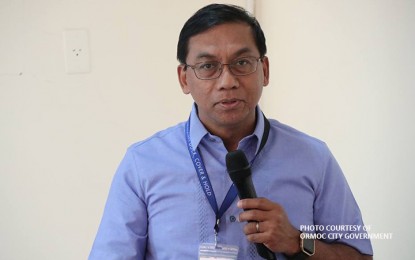
Phivolcs director Renato Solidum, Jr.
MANILA – The Philippine Institute of Volcanology and Seismology (Phivolcs) recorded 44 aftershocks as of 12 noon Monday, or almost 24 hours after a magnitude 6.1 quake jolted Davao del Sur.
Phivolcs director Renato Solidum Jr. said these aftershocks ranged from magnitudes 1.8 to 3.5, with a depth range from 1 to 29 kilometers. Three of the aftershocks were felt.
In an interview with the Philippine News Agency, Solidum said the magnitude 6.1 quake was caused by the movement of the Makilala-Malungon Fault.
The strong quake generated Intensity VII (destructive), but Solidum said there were many instances when the country had experienced a stronger intensity or Intensity VIII (very destructive).
Solidum explained that an earthquake's intensity depends on several factors.
"Ground shaking is based on the magnitude -- higher magnitudes will cause higher shaking intensity," he said.
Another factor, he said, is the distance from the source of the earthquake or its epicenter. "The deeper and farther the quake, the lesser the intensity."
It may be recalled that the magnitude 7.1 quake that jolted Davao Occidental last Jan. 21 only generated Intensity V even if the earthquake was higher in magnitude compared to last Sunday's.
The magnitude 7.1 quake was not damaging as the shaking intensity resulting from the earthquake was not destructive due to the depth and distance to land, Solidum explained earlier. This quake struck near the boundary of the Philippines and Indonesia, he added.
Also affecting an earthquake's intensity is the foundation of house or building, or the subsurface (soil or rock) where a person was staying during the earthquake.
"Loose, unconsolidated foundation would cause a person to experience higher intensity than if the foundation is hard rock," Solidum explained.
Phivolcs reports both the intensity and instrumental intensity in every earthquake bulletin.
Reported intensity is the traditional way of knowing the intensity based on reports by people who felt the earthquake, while instrumental intensity is measured using intensity meter that measures ground acceleration.
Meanwhile, Solidum said the area affected by the magnitude 6.1 quake is the same area affected by a strong earthquake in 2019. A magnitude 6.9 also jolted Davao del Sur in December 2019.
With this, he advises residents in the area to be prepared in terms of constructing their houses.
"Residents in the area should always be prepared through constructing earthquake resistant houses and buildings according to the National Building Code, using right design, standard materials and workmanship," he said.
He added that residents must strengthen weak houses and buildings; prepare evacuation and response plans.
They should also participate in drills and prepare emergency bags, he said. (PNA)
